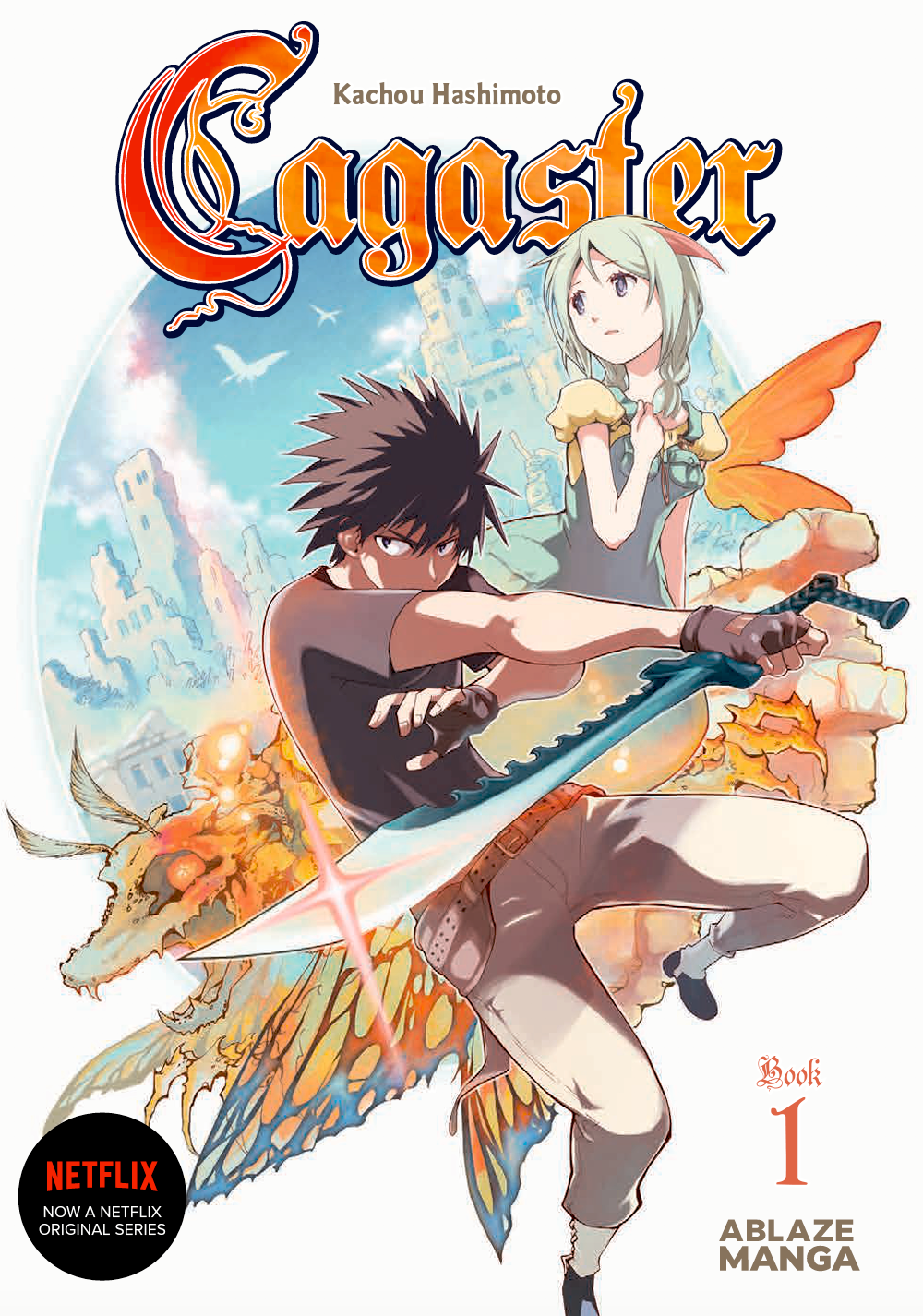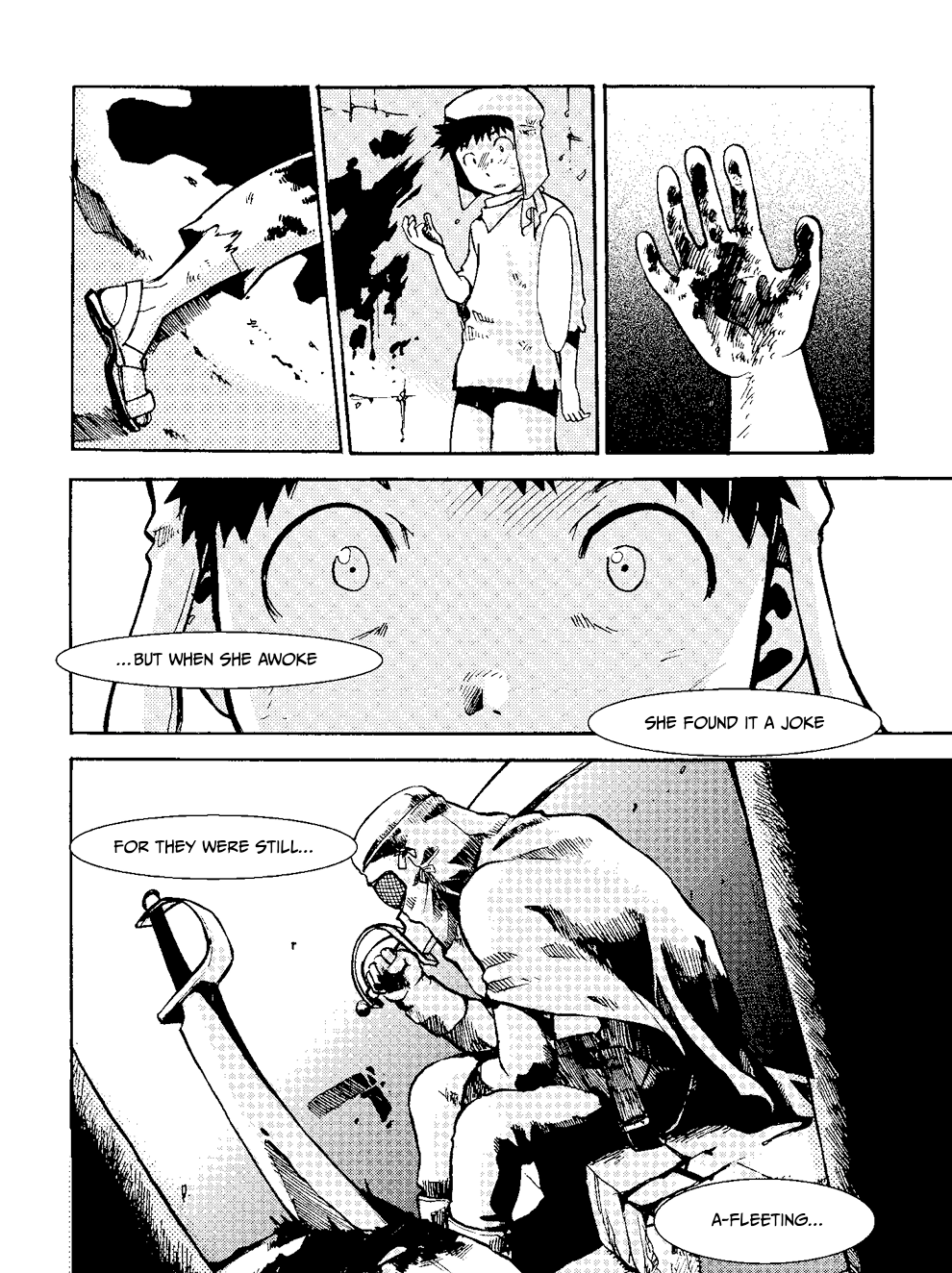Cagaster of an Insect Cage Vol. 1
- WRITER
- Kachō Hashimoto
- Artist
- Kachō Hashimoto
- Publisher
- Ablaze Publishing
- Price
- 12.99 (USD)
- Release Date
- 2020-07-14
Cagaster of an Insect Cage was initially housed as a dōjinshi series on Kachō Hashimoto's website from 2005 to 2013 before it was picked up by publisher Tokuma Shoten. With Ablaze Publishing now bringing the story to life in English, fans can bite into the post-apocalyptic story about a world overrun by giant bugs, made more popular by the recent Netflix anime adaptation.
While Volume 1 covers just about half of that season, there are a lot of deeper cuts Hashimoto, as writer and illustrator, packs in that don't necessarily translate to the anime. In fact, you'd get a greater appreciation for the morose and wartorn atmosphere here as it's got a little less levity. This allows Hashimoto to paint a much bleaker picture of why humanity continues to be its greatest enemy and the biggest monster in the most-dire of times.
The premise is pretty straightforward. A mysterious infection has been activating a gene in people that turns them into giant bugs which then feast on those that aren't converted. It's known as the Cagaster effect and with two-thirds of humanity eliminated, the Eastern and Western halves of the world are totally separate as they try to survive. Given the current state of the world, this may feel slightly too close to home for some readers.
This leads to a young hunter, the Exterminator known as Kidow, trying to bring a rescued young girl, Ilie, to her mother Tania. But in the process, secrets unravel that could doom the Eastern Coalition rather than provide routes to a cure. In that sense, there are tones of The Walking Dead in the story as we see various military regions and societies going about the pandemic their own way, with serial killers afoot as well and everyone holding selfish, mostly hidden agendas.
Hashimoto wades into this insularity by focusing on character over gore, showing that in 2125 A.D., Southwest Asia, no matter what, politics and war will always be the ultimate currency. Kidow's journey, especially, proves it's the trade and industry that creates a new breed of capitalism and one they all have to partake in to live. It's as sociopolitical as can be, especially when Hashimoto expounds on the medicinal aspect and how the planet just won't unite for a common cause.
She simply doesn't pull punches on how the spread of the disease spirals out of control, nor the ensuing drama with governments incapable of containing or treating it. But apart from world powers jostling for, well, more power, we also get a deep dive into the casualties of both war and the ghetto soldiers left razing the beasts. It creates a swirling pool of emotions that touches on immigrants and refugees, reminding us how Middle Eastern countries are too often left on their own after freedom fighters bomb them. In other words, Exterminators and the various regiments Hashimoto dissect aren't as heroic as they seem, and as their sides of the story unfold, you get the sense she's painting science as the true terrorist that manufactures chaos for profit.
As heavy as the essence of Cagaster is, Hashimoto's minimal art style cleverly allows the story to breathe, evoking franchises like Attack on Titan but with influences from other apocalyptic stories like Mad Max. She doesn't let backgrounds, the insects or the high-octane battles overpower the focus, opting to make character the centerpiece rather than aesthetic. This is what establishes a stronger emotional connection.
Ultimately, it's a highly recommended story because as escapist and high-concept as the adventure starts off as, deep down, it's a testament to the human spirit. More so, it resonates when these small underdog pockets of society rise above, trying to survive against the ultimate predators, all while humanity struggles to keep its soul and moral compass intact.



